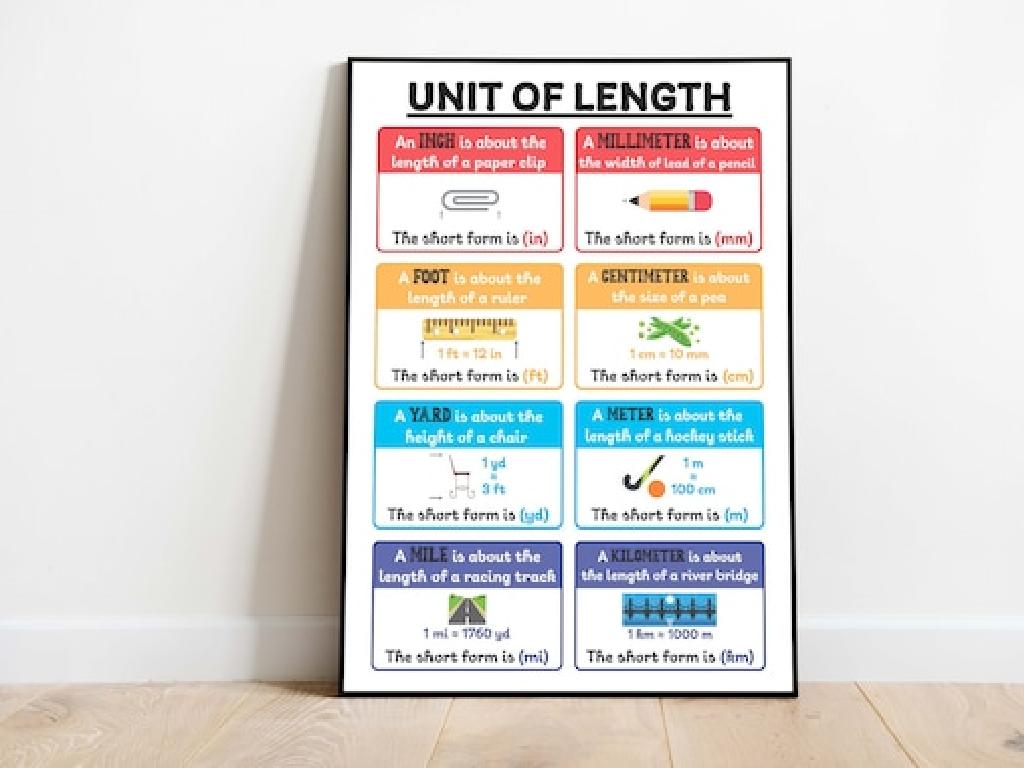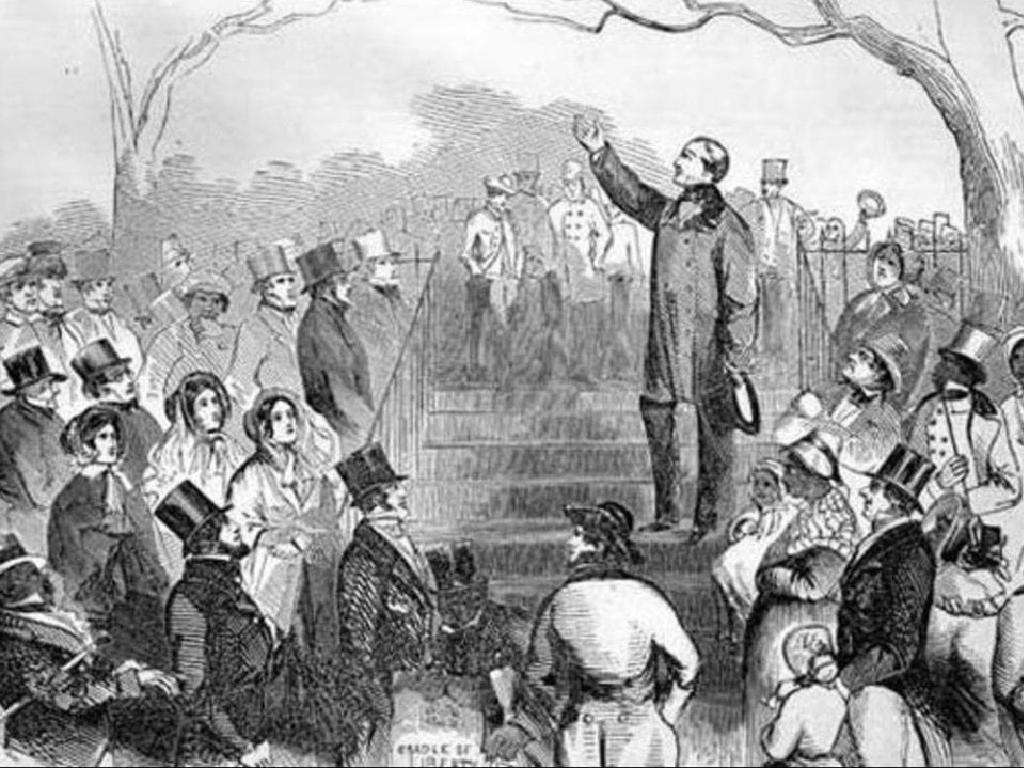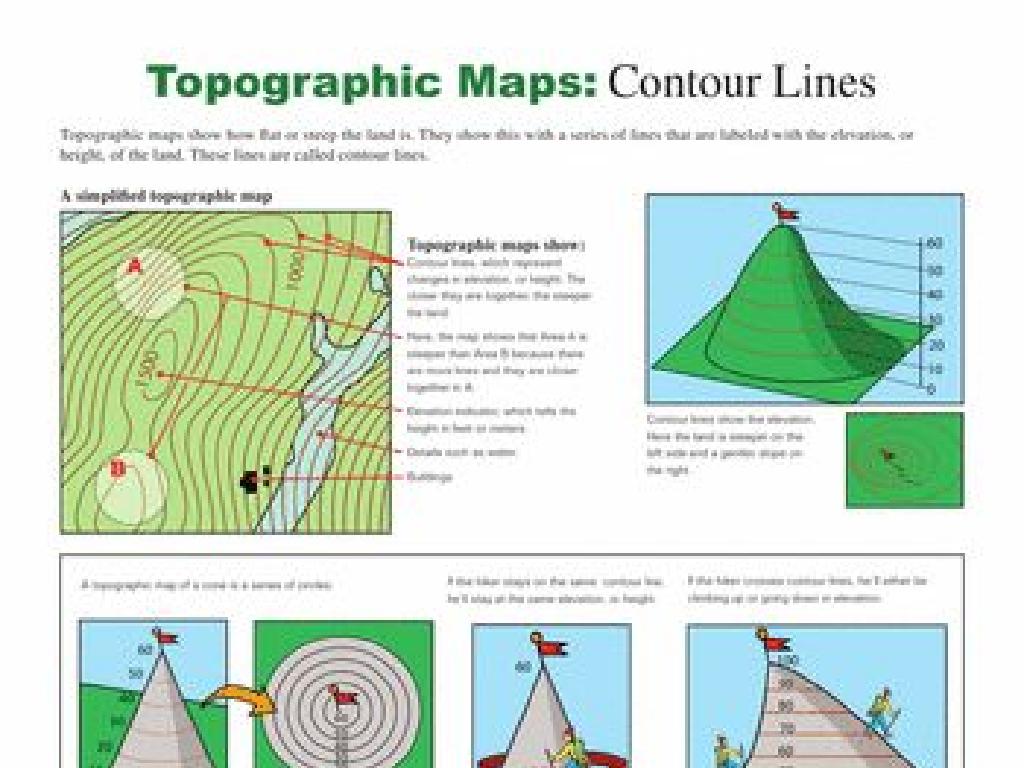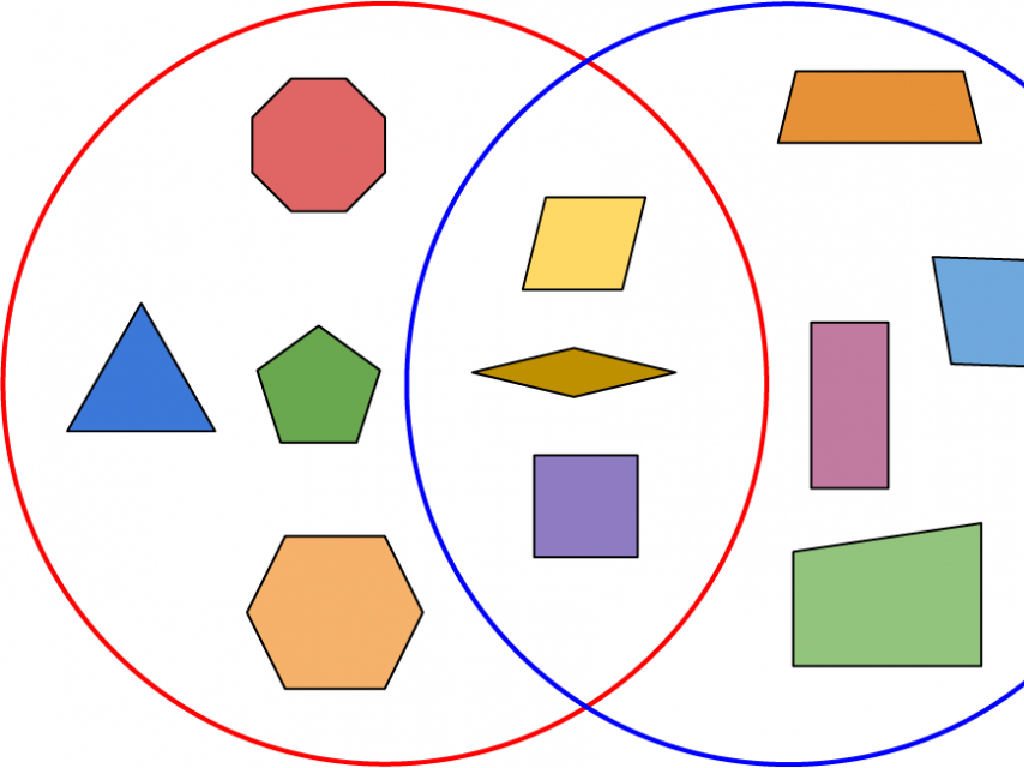Estimate Angle Measurements
Subject: Math
Grade: Sixth grade
Topic: Lines And Angles
Please LOG IN to download the presentation. Access is available to registered users only.
View More Content
Estimating Angle Measurements
– What are angles?
– Angles are formed by two rays meeting at a point.
– Angles in daily life
– Angles help us build structures and understand shapes.
– Estimation techniques
– Use reference angles to guess measurements.
– Today’s learning goals
– We’ll learn to estimate and measure angles.
|
Begin the class with a basic definition of angles, ensuring students understand the concept of two rays meeting at a point. Highlight the significance of angles in real-world applications, such as construction and design, to pique their interest. Introduce estimation techniques, such as comparing with a 90-degree angle or using a protractor’s edge for rough estimates. Outline the objectives for today’s lesson, which include understanding how to estimate angle measurements and the importance of this skill in geometry. Encourage students to think about where they encounter angles in their daily lives and how estimation could be a useful skill.
Understanding Angles
– Define an angle
– An angle is formed by two rays (the arms) with a common endpoint (the vertex).
– Identify the vertex
– The vertex is the point where two lines meet to form an angle.
– Recognize angle arms
– The two lines that extend from the vertex are the arms of the angle.
– Angle measurement basics
|
Begin the lesson by defining an angle as a figure formed by two rays, called the arms, sharing a common endpoint, known as the vertex. Use visuals to help students identify these components in different angles. Emphasize the importance of the vertex, as it is the pivotal point from which the angle is measured. Explain that the space between the arms is what we measure to determine the size of an angle. Introduce the concept of estimating angle measurements by comparing them to quarter turns and right angles. Encourage students to think of real-life objects that might form angles, such as the hands of a clock or the corner of a book, to make the concept more relatable.
Estimating Angle Measurements
– Acute angles: less than 90°
– An angle smaller than a right angle
– Right angles: exactly 90°
– An angle equal to 90°, like the corners of a square
– Obtuse angles: more than 90°
– An angle larger than a right angle but not a straight line
– Straight angles: 180°
– An angle that forms a straight line
|
This slide introduces students to the basic types of angles they will encounter and how to estimate their measurements. Acute angles are sharp and less than 90 degrees. Right angles are common in everyday objects like books and tables, and they are always 90 degrees. Obtuse angles are wider and found between 90 and 180 degrees. Straight angles are line angles and measure 180 degrees. Encourage students to look for these angles in the classroom and at home to help them better estimate angle measurements in real-world contexts.
Estimating Angle Measurements
– Use benchmarks for estimation
– Benchmarks like 45°, 90°, and 180° help guess measurements.
– Right angle as a reference
– A 90° angle helps estimate angles less or more than 90°.
– Compare angles to benchmarks
– Is the unknown angle smaller or larger than 90°?
– Practice with different angles
– Use paper corners or objects as a reference for practice.
|
This slide introduces students to the concept of estimating angles without a protractor by using familiar benchmarks. Emphasize the importance of developing a good ‘eye’ for measurement, which can be useful in real-life situations where precise tools aren’t available. Use a right angle, which is 90 degrees and commonly found in classroom objects like books and papers, as a primary reference point. Encourage students to compare unknown angles to these benchmarks to decide if they are acute, right, or obtuse. Provide various examples and encourage students to practice with everyday objects to reinforce the concept. This skill will enhance their spatial awareness and geometric reasoning.
Estimating Angle Measurements
– Visual estimation techniques
– Guess angle sizes by sight, like ‘less than 90 degrees’
– Using objects for comparison
– Compare angles with familiar objects, e.g., ‘wider than a handspan’
– Introduction to protractor use
– Learn to estimate with a protractor before measuring
– Practice estimation skills
– Estimate angles in class activities for hands-on learning
|
This slide introduces students to various techniques for estimating angle measurements. Start with visual estimation, encouraging students to make educated guesses about angles by sight. For example, they might identify an angle as acute or obtuse. Next, demonstrate how everyday objects like hands or pencils can serve as reference points for comparison. Introduce the protractor as a tool for estimation, explaining that it will be used for more precise measurements later. Finally, engage students with practice activities where they can apply these techniques, such as estimating the angles of various items around the classroom or in a handout. This will prepare them for more accurate angle measurement in future lessons.
Practice Estimation: Classroom Angles
– Estimate classroom angles
– Group work: compare & discuss
– Work in teams to estimate angles found in the classroom, then discuss differences in estimations.
– Individual: estimate on handout
– Use the handout to practice estimating angles individually and check accuracy.
– Understand estimation accuracy
|
This slide introduces a practical activity focused on estimating angles, a key skill in geometry. Begin by having students look around the classroom and estimate the angles they see, such as corners of desks, where walls meet, or angles on posters. Then, in groups, students will compare their estimations and discuss any variances in their observations. This collaborative effort encourages critical thinking and justification of their reasoning. After the group activity, provide a handout with various angles for individual practice. This will help students refine their estimation skills and provide a clearer understanding of how to gauge angles without a protractor. The teacher should circulate the room, offering guidance and ensuring that students understand the concept of estimation. Conclude with a discussion on the importance of estimation and its accuracy in real-world applications.
Using a Protractor: Measuring Angles
– Placing the protractor correctly
– Center the hole over the angle’s vertex; align the baseline with one arm of the angle.
– Reading the protractor’s scale
– Ensure you’re using the correct scale; inner or outer depending on the angle direction.
– Practice measuring angles
– Use the protractor to measure various angles on practice worksheets.
|
This slide is designed to teach students the correct method of using a protractor to measure angles, which is a fundamental skill in geometry. Start by demonstrating how to place the protractor so that its center is over the angle’s vertex and one of its lines is aligned with one arm of the angle. Show students how to read the correct scale, which can be confusing as protractors have two sets of numbers. Provide practice worksheets with a variety of angles for students to measure. Encourage them to check their work by measuring twice. This hands-on practice will help solidify their understanding of angle measurement.
Class Activity: Angle Hunt
– Find angles in the classroom
– Estimate each angle’s measurement
– Is it acute, right, obtuse, or straight?
– Measure angles with a protractor
– Use the protractor’s baseline and center point
– Compare estimates with actuals
– How close were your estimates?
|
This interactive activity is designed to help students apply their knowledge of angles in a practical setting. Students will search for various angles within the classroom or school, such as corners of desks, doorways, or even objects like open books. They will then make an educated guess (estimate) of the angle’s measurement, considering whether it’s acute, right, obtuse, or straight. After estimating, they will use a protractor to measure the actual angle. Finally, students will compare their estimated measurements with the actual measurements to see how accurate they were. This exercise will enhance their estimation skills and understanding of measuring angles. For the activity, prepare a worksheet for students to record their findings, and ensure that there are enough protractors for all students. Possible variations of the activity could include working in pairs, using digital tools to measure angles, or creating a classroom angle gallery with photos of the found angles and their measurements.
Review and Reflect: Estimating Angles
– Recap angle estimation methods
– Review benchmark angles and using them as references for estimation
– Discuss estimation usefulness
– Estimating angles helps in approximating measurements quickly without tools
– Review common estimation errors
– Common errors include overestimating acute angles and underestimating obtuse angles
– Clarify misconceptions
– Ensure understanding that estimation is not guessing; it’s based on known references
|
This slide aims to consolidate the students’ knowledge on angle estimation techniques, emphasizing the practicality of estimation in real-life scenarios, such as in construction or art. Highlight the importance of using benchmark angles like 45°, 90°, and 180° as a reference to gauge other angles. Address typical mistakes made by students, such as over or underestimation, and clarify that estimation involves logical reasoning, not random guessing. Encourage students to practice by estimating angles in various objects around them and to correct any misconceptions they might have about the process.
Homework: Estimating and Measuring Angles
– Complete the angle worksheet
– Find and estimate home angles
– Look for angles in furniture or architecture
– Measure angles you find
– Use a protractor to measure angles accurately
– Learn about complementary angles
– Complementary angles add up to 90 degrees
|
This homework assignment is designed to reinforce the day’s lesson on estimating angle measurements. Provide students with a worksheet that includes a variety of angles to practice estimating and then measuring with a protractor. Encourage them to apply these skills in their everyday environment by identifying and measuring angles they find at home, such as corners of rooms, pieces of furniture, or even angles created by the hands of a clock. This practical application helps solidify their understanding of angles in a real-world context. Additionally, prepare them for the next lesson by introducing the concept of complementary and supplementary angles, ensuring they understand that complementary angles sum up to 90 degrees. This will set the foundation for the next class discussion.






